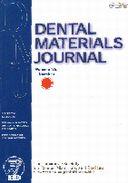Volume 29, Issue 1
Displaying 1-15 of 15 articles from this issue
- |<
- <
- 1
- >
- >|
Feature Review
-
2010 Volume 29 Issue 1 Pages 1-8
Published: 2010
Released on J-STAGE: April 05, 2010
Download PDF (4598K)
Original Papers
-
2010 Volume 29 Issue 1 Pages 9-14
Published: 2010
Released on J-STAGE: April 05, 2010
Download PDF (514K) -
2010 Volume 29 Issue 1 Pages 15-24
Published: 2010
Released on J-STAGE: April 05, 2010
Download PDF (6182K) -
2010 Volume 29 Issue 1 Pages 25-29
Published: 2010
Released on J-STAGE: April 05, 2010
Download PDF (325K) -
2010 Volume 29 Issue 1 Pages 30-34
Published: 2010
Released on J-STAGE: April 05, 2010
Download PDF (424K) -
2010 Volume 29 Issue 1 Pages 35-40
Published: 2010
Released on J-STAGE: April 05, 2010
Download PDF (1172K) -
2010 Volume 29 Issue 1 Pages 41-46
Published: 2010
Released on J-STAGE: April 05, 2010
Download PDF (270K) -
2010 Volume 29 Issue 1 Pages 47-52
Published: 2010
Released on J-STAGE: April 05, 2010
Download PDF (275K) -
2010 Volume 29 Issue 1 Pages 53-58
Published: 2010
Released on J-STAGE: April 05, 2010
Download PDF (1427K) -
2010 Volume 29 Issue 1 Pages 59-67
Published: 2010
Released on J-STAGE: April 05, 2010
Download PDF (857K) -
2010 Volume 29 Issue 1 Pages 68-74
Published: 2010
Released on J-STAGE: April 05, 2010
Download PDF (2383K) -
2010 Volume 29 Issue 1 Pages 75-83
Published: 2010
Released on J-STAGE: April 05, 2010
Download PDF (3612K) -
2010 Volume 29 Issue 1 Pages 84-88
Published: 2010
Released on J-STAGE: April 05, 2010
Download PDF (346K) -
2010 Volume 29 Issue 1 Pages 89-96
Published: 2010
Released on J-STAGE: April 05, 2010
Download PDF (838K) -
2010 Volume 29 Issue 1 Pages 97-103
Published: 2010
Released on J-STAGE: April 05, 2010
Download PDF (4097K)
- |<
- <
- 1
- >
- >|
